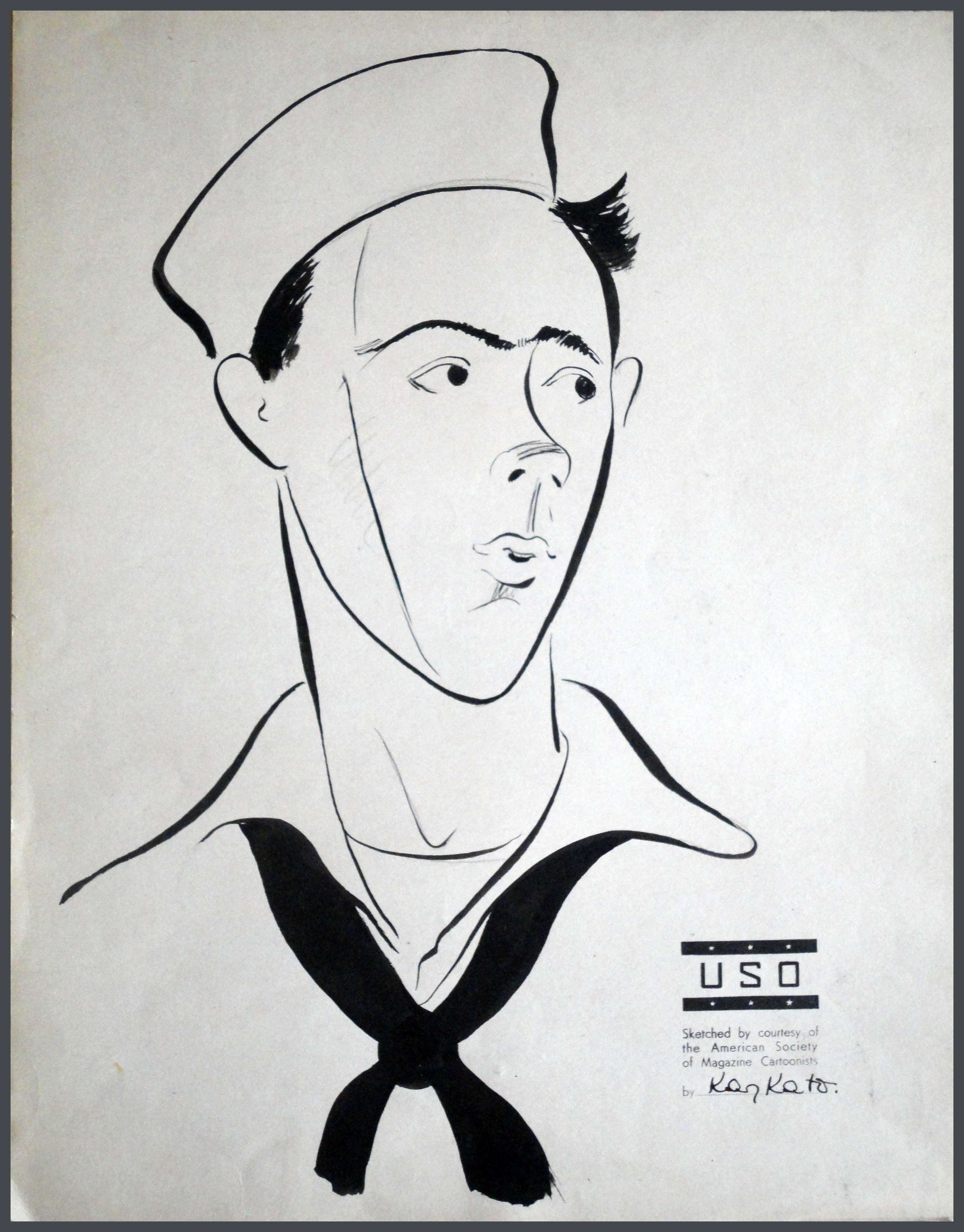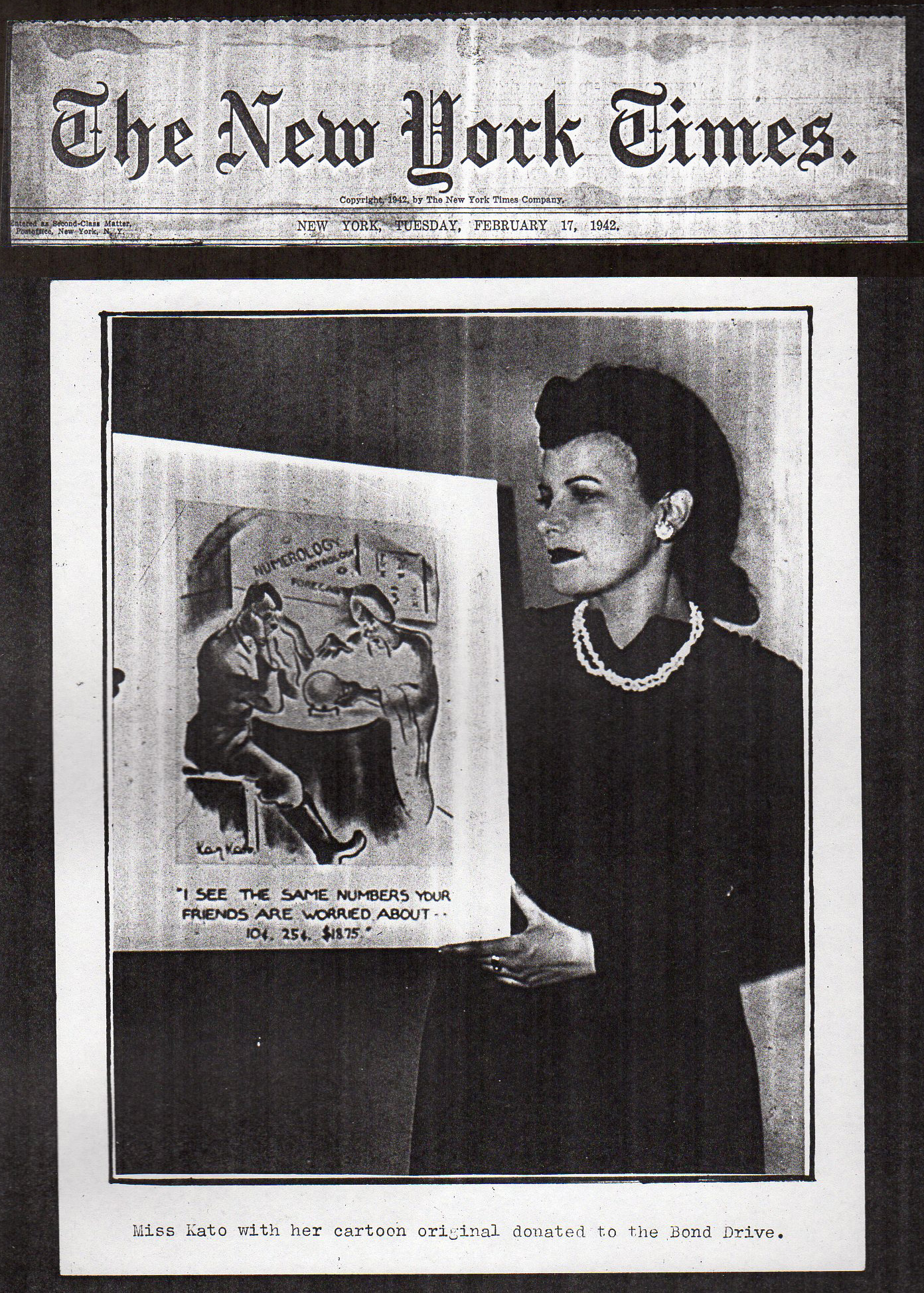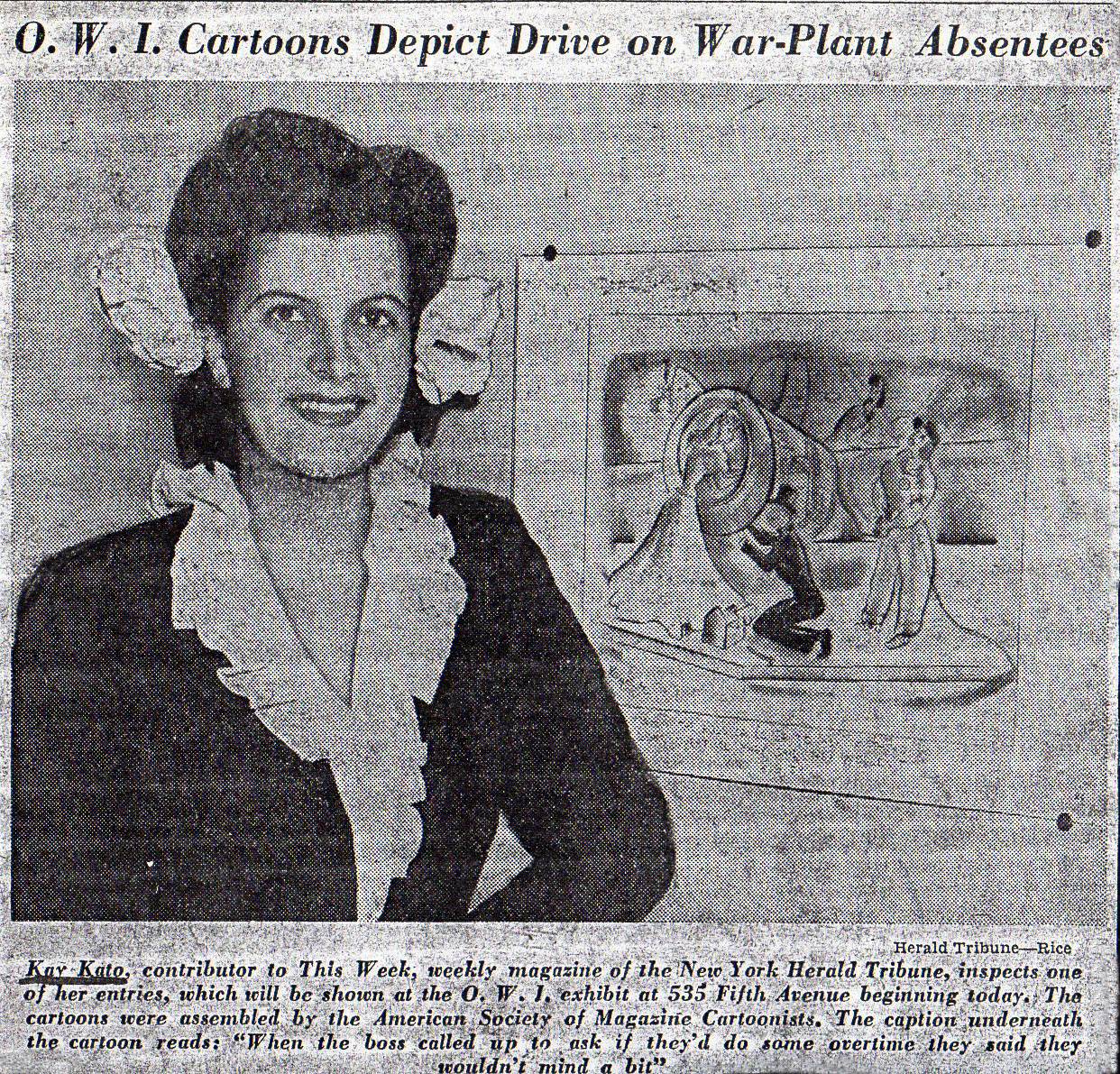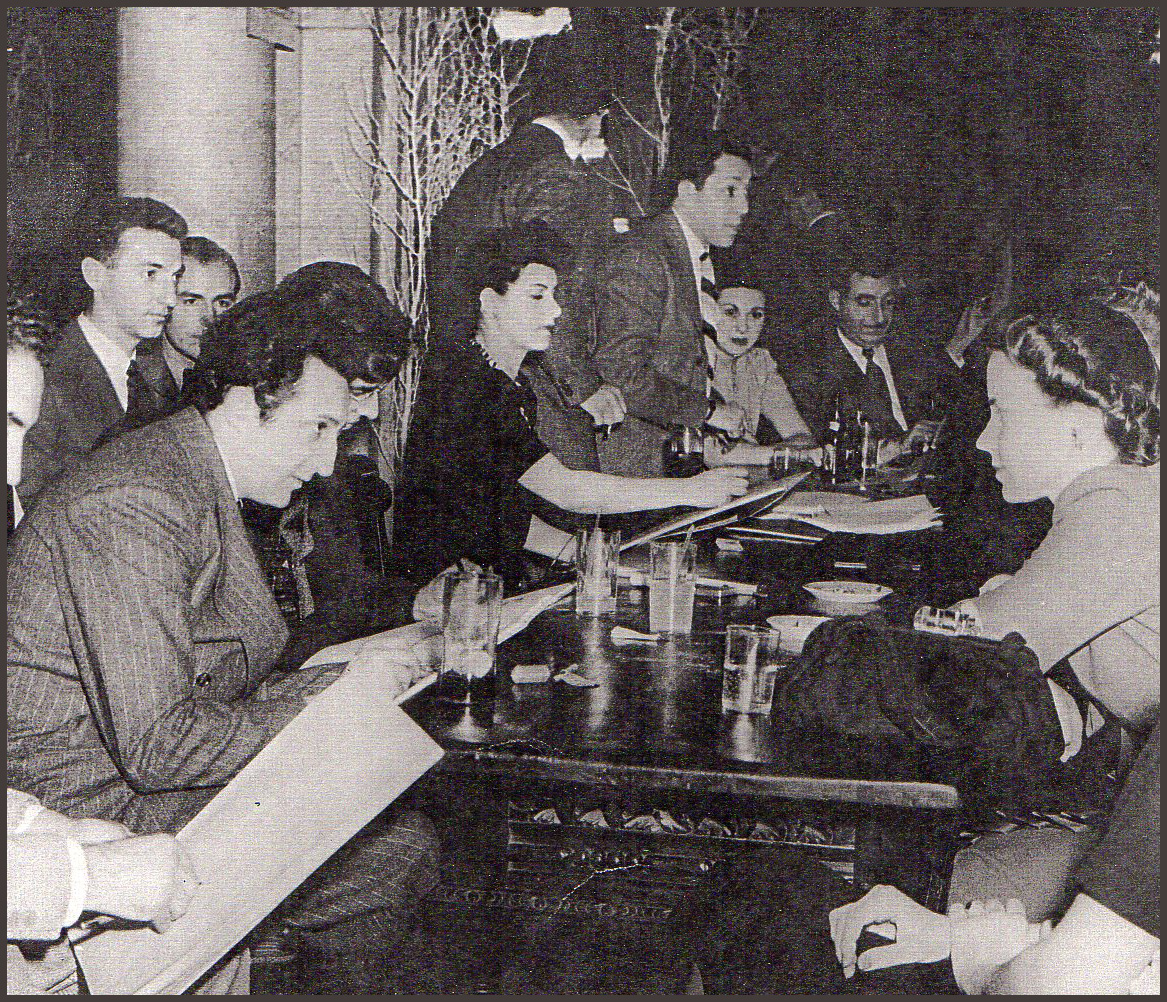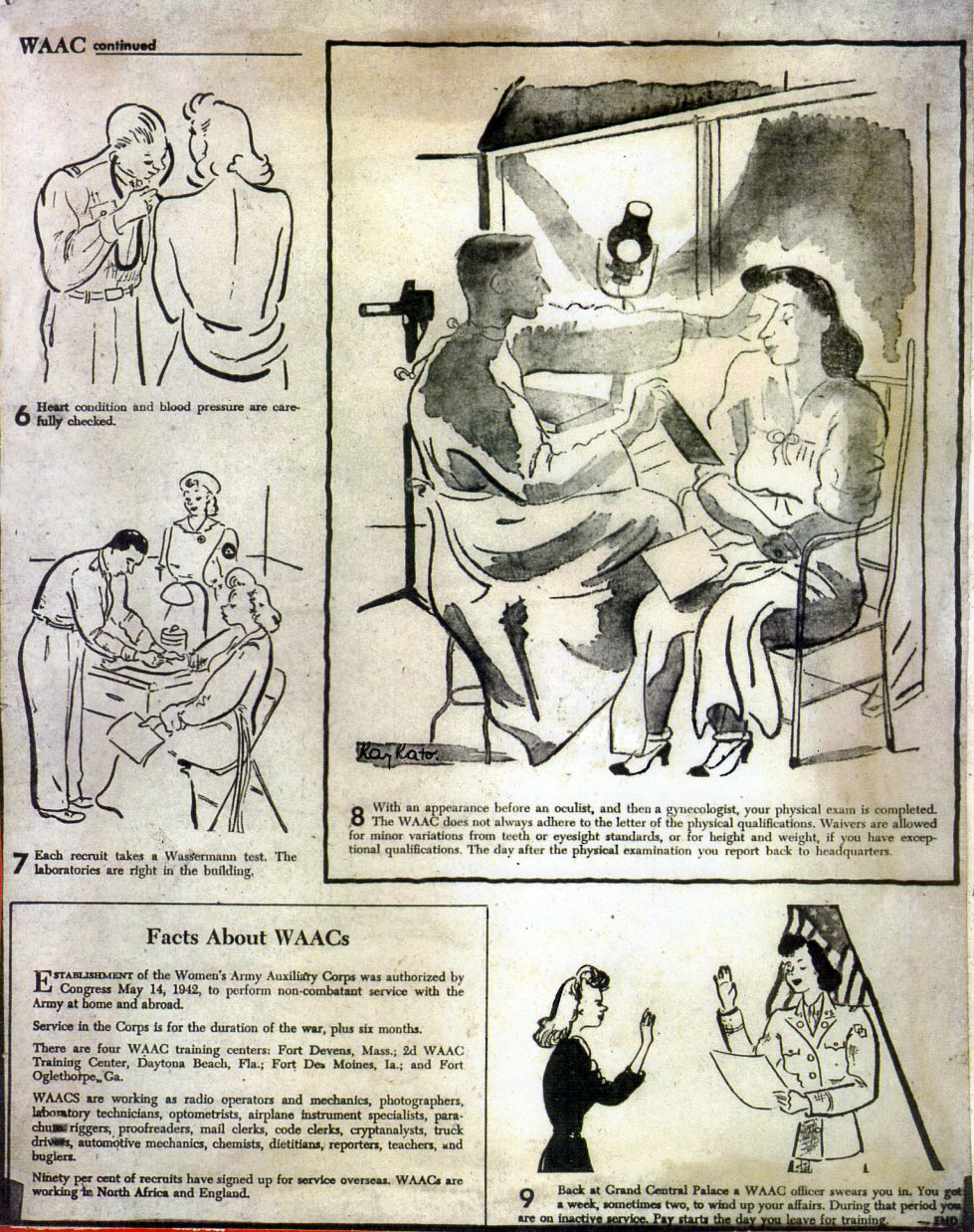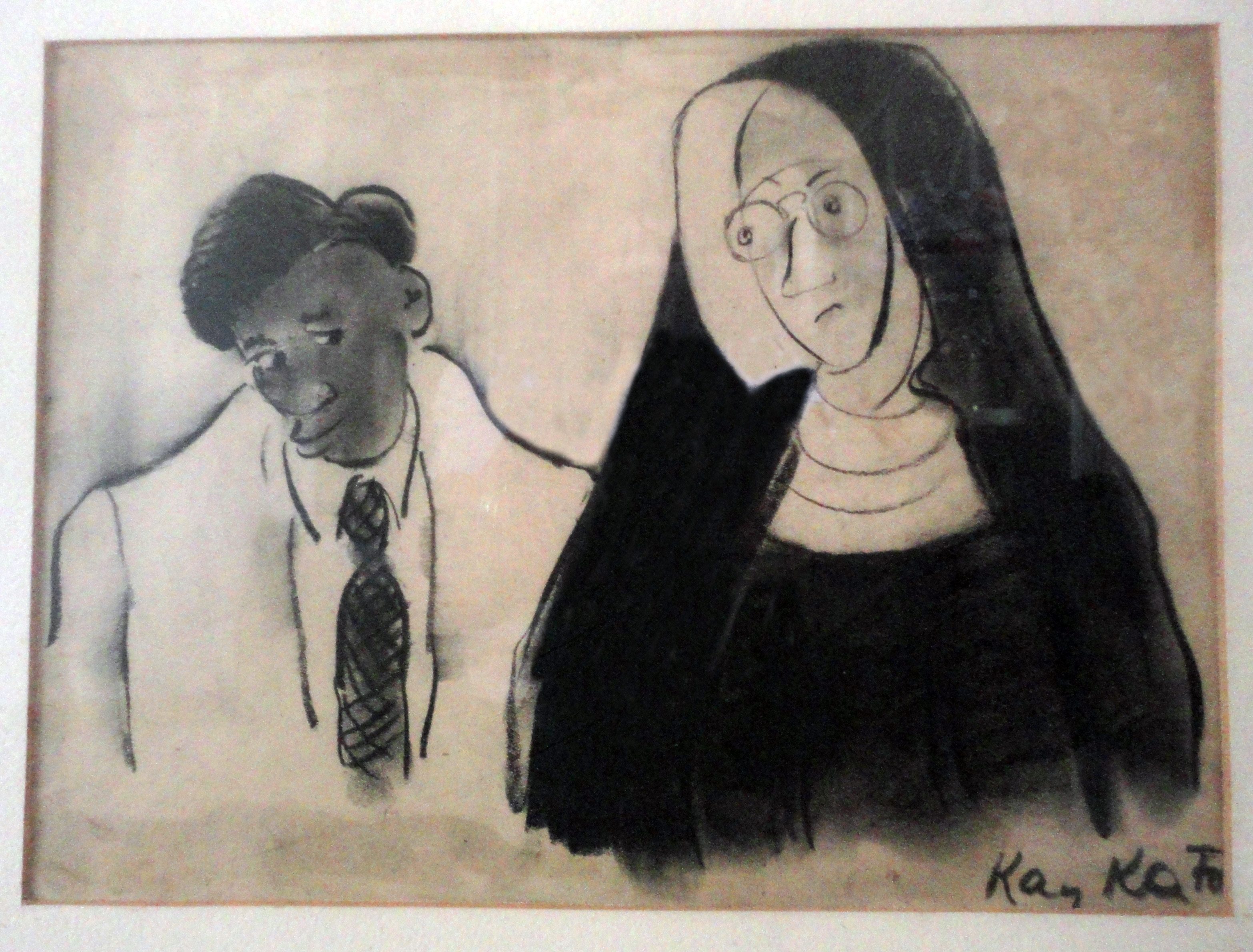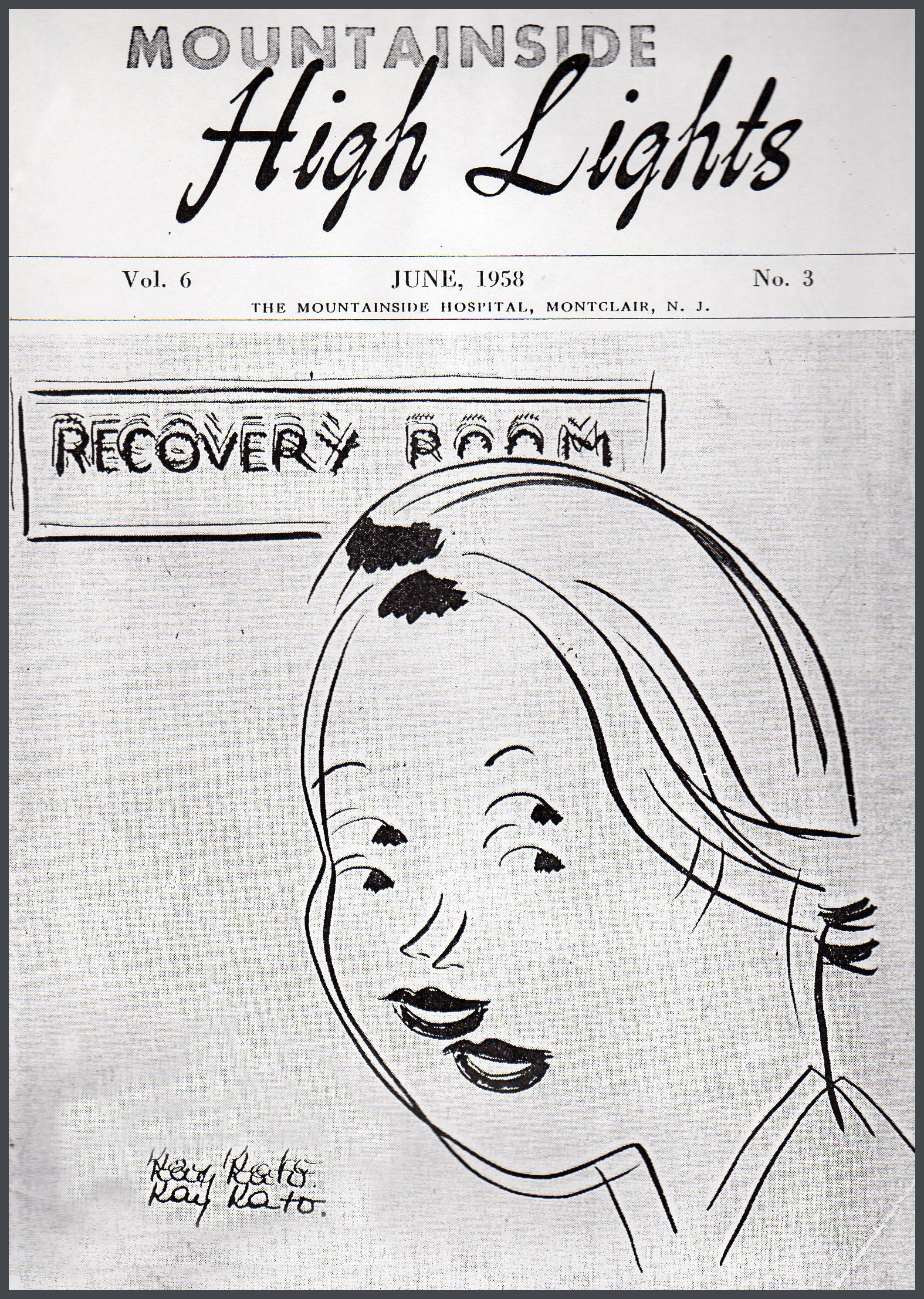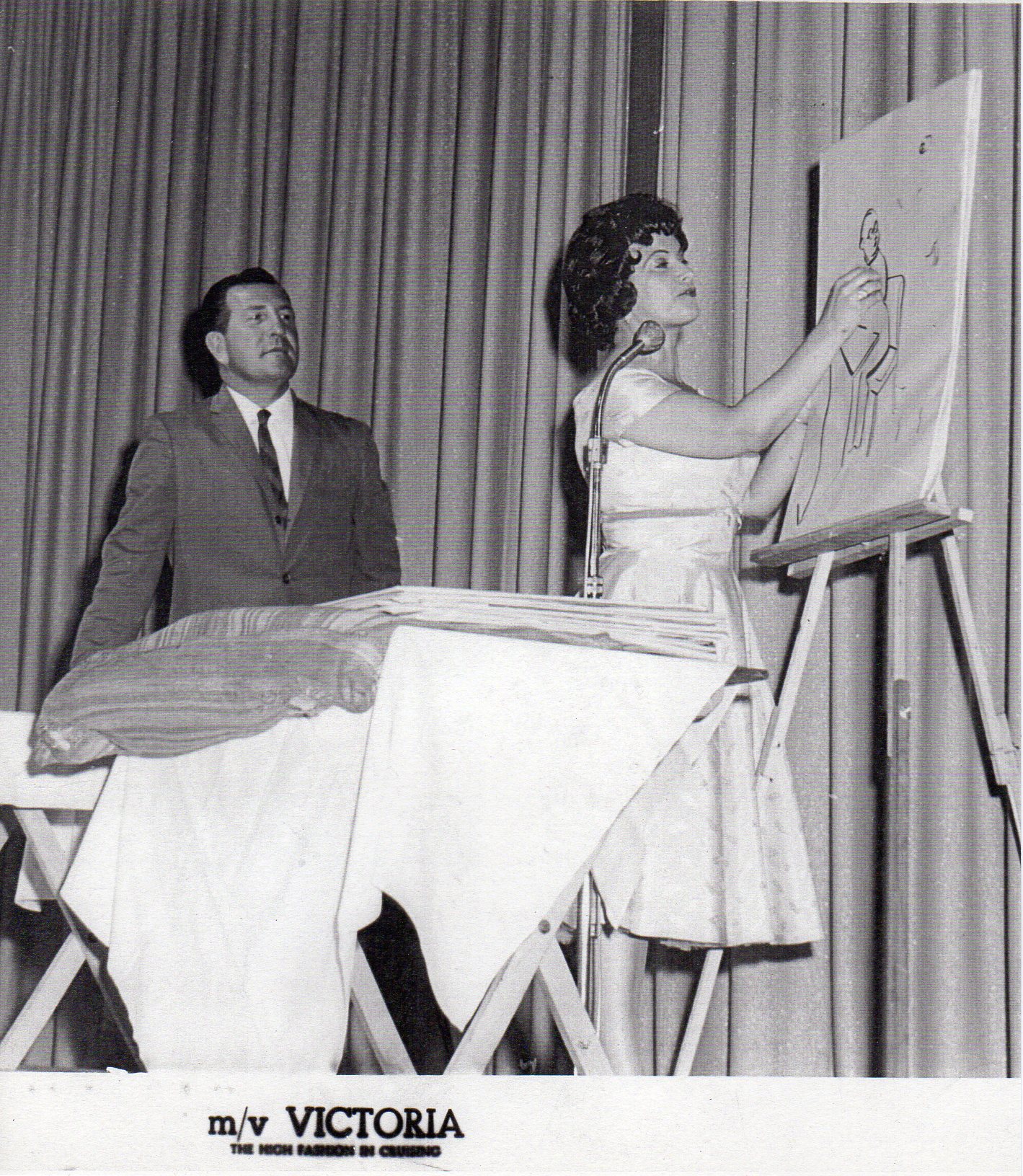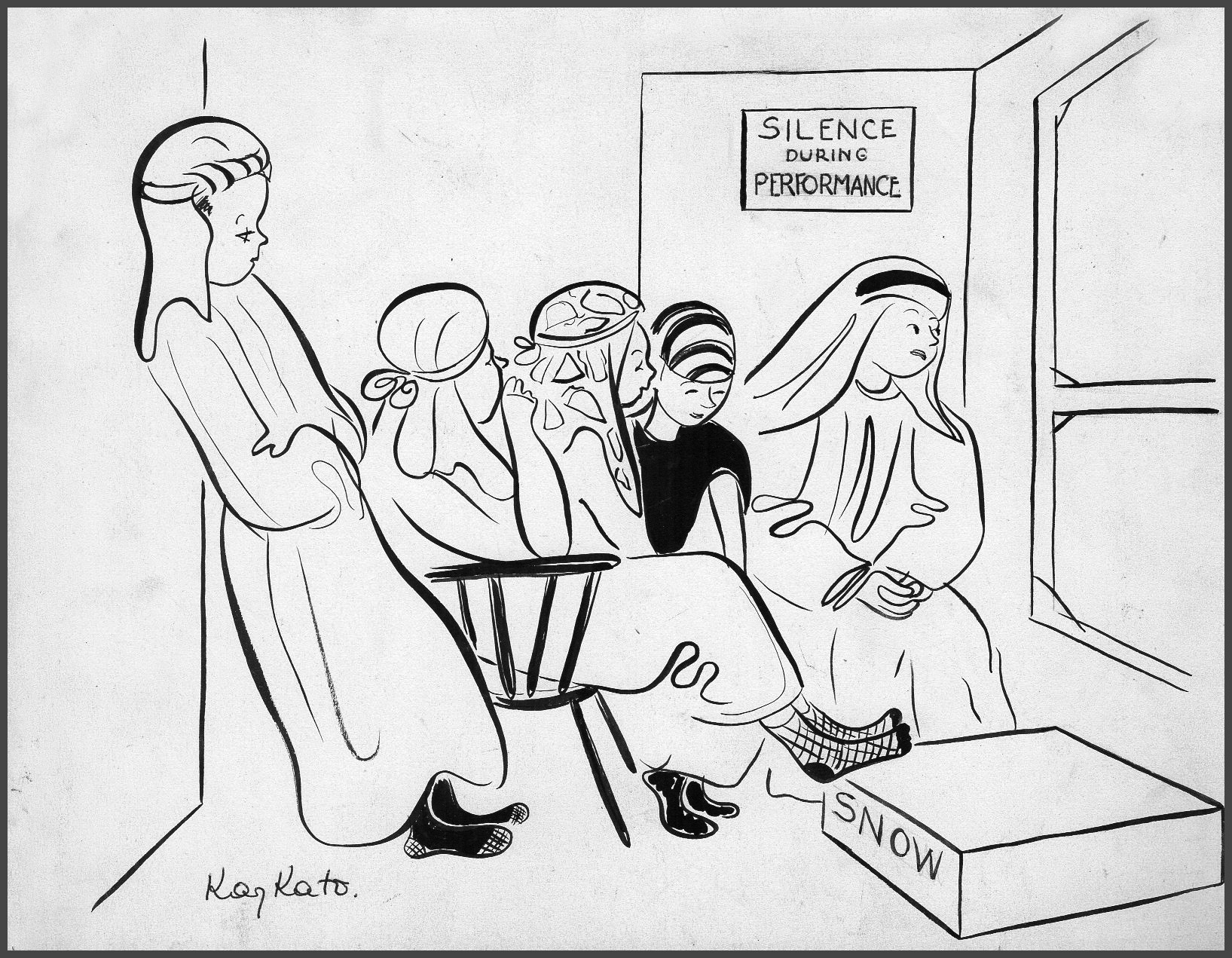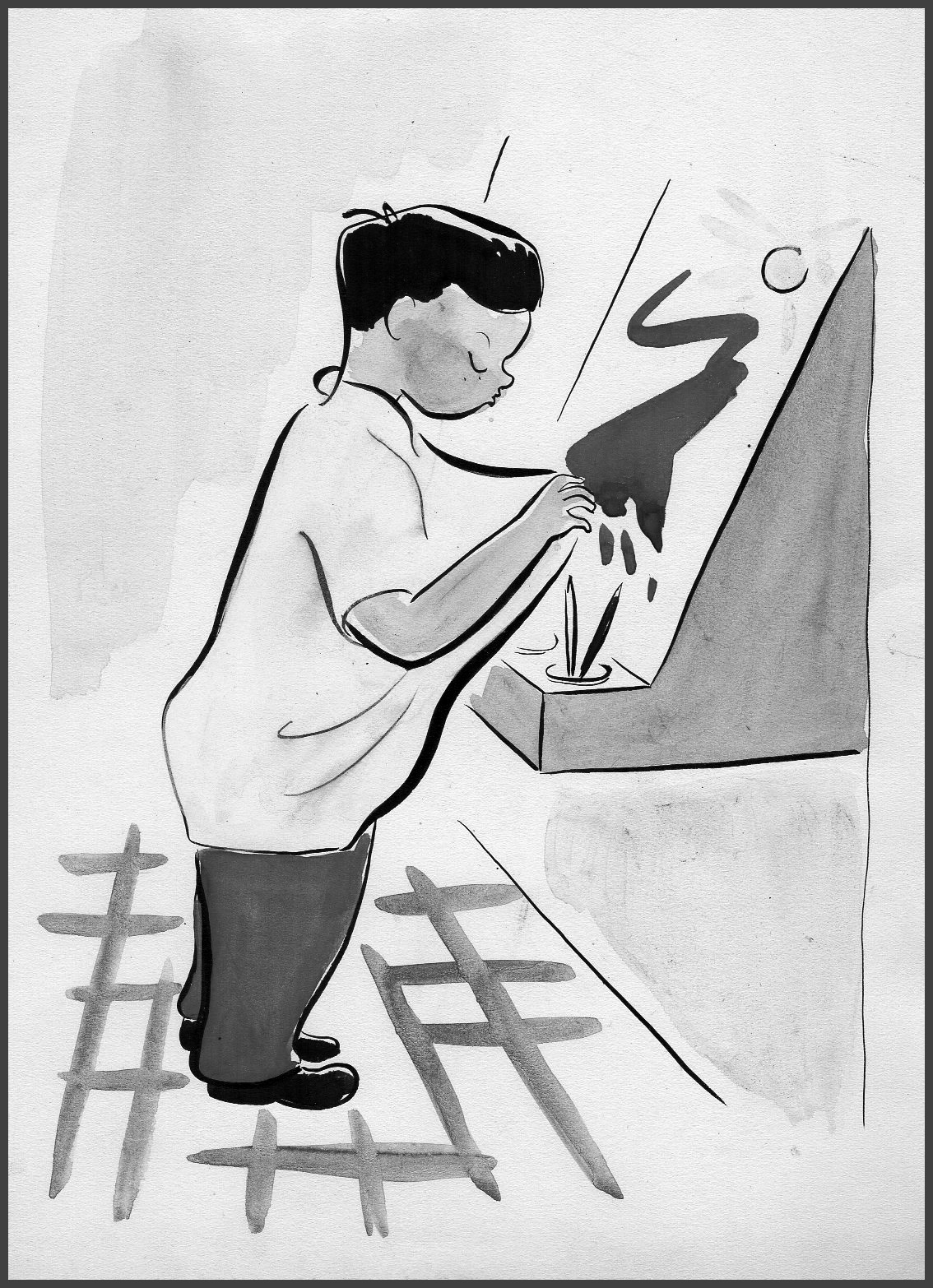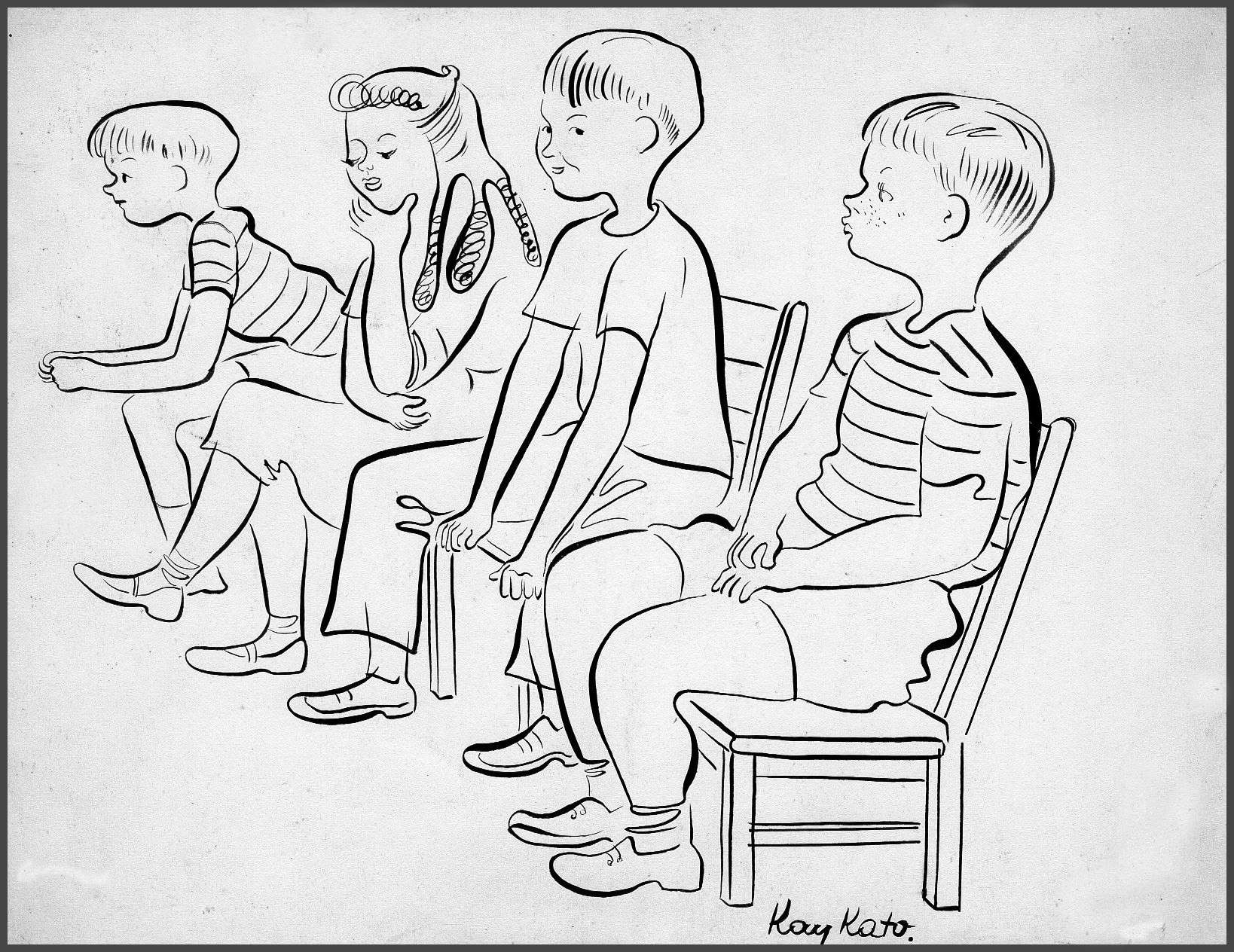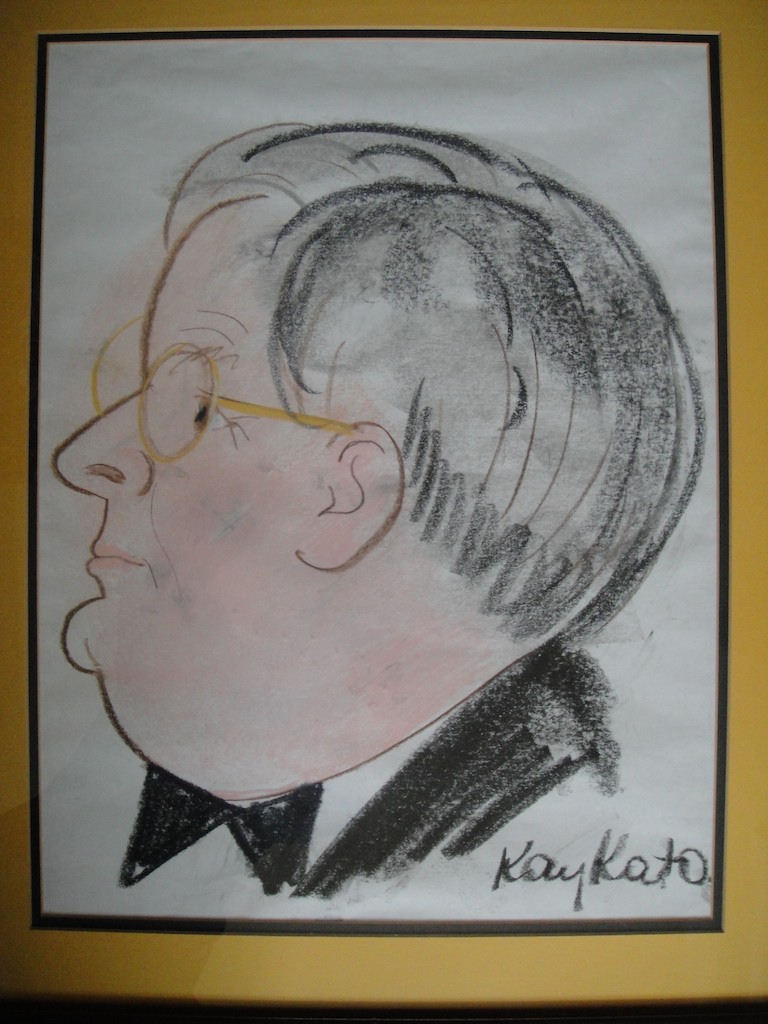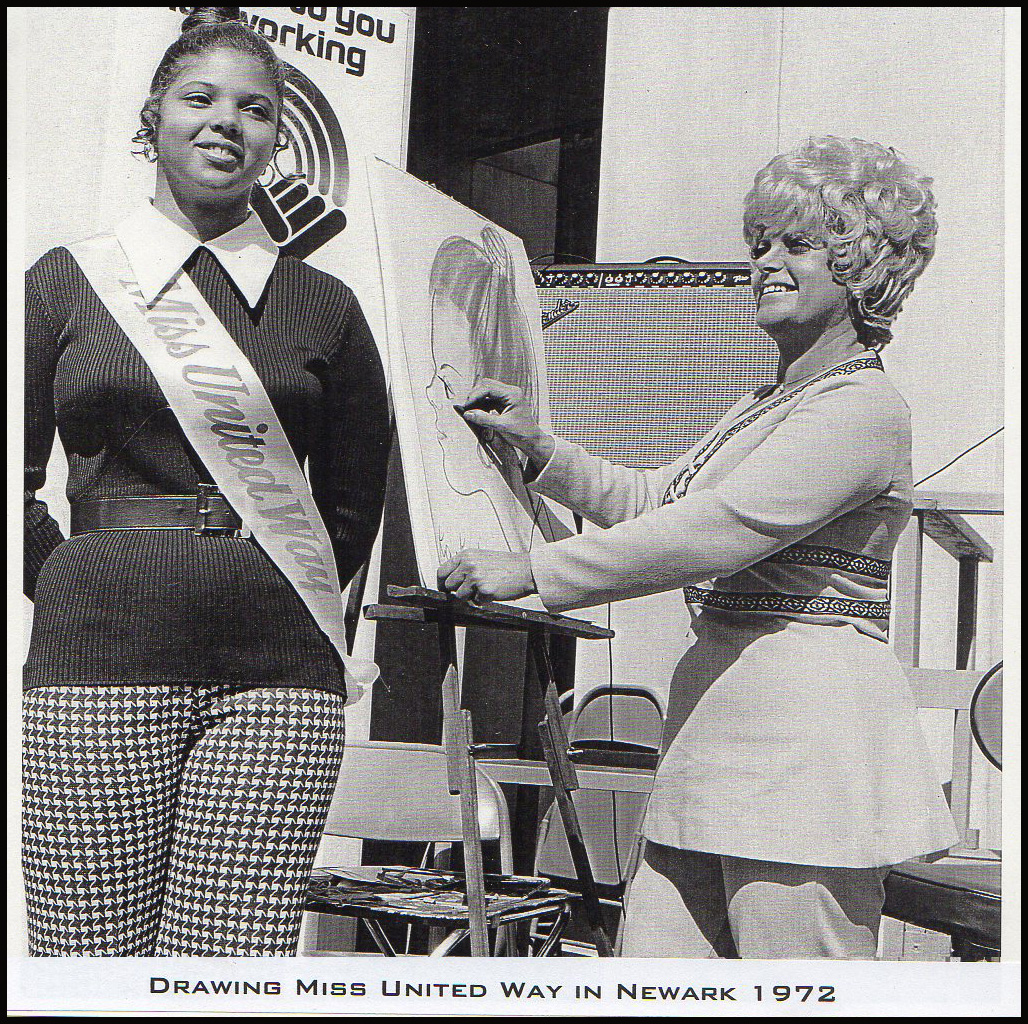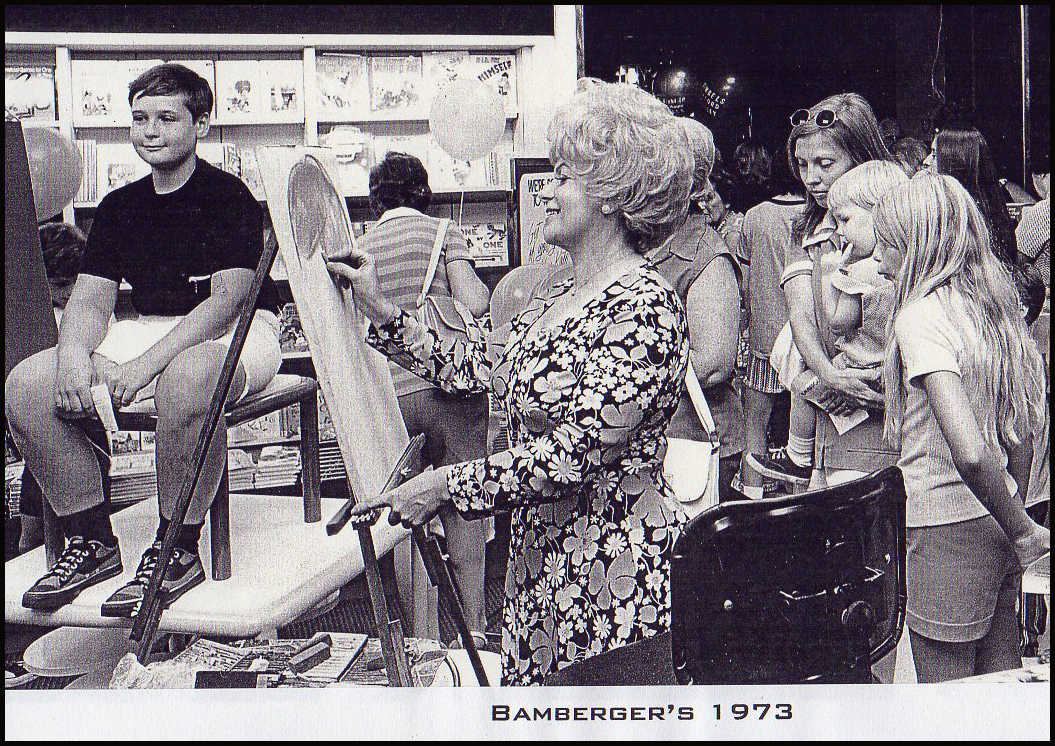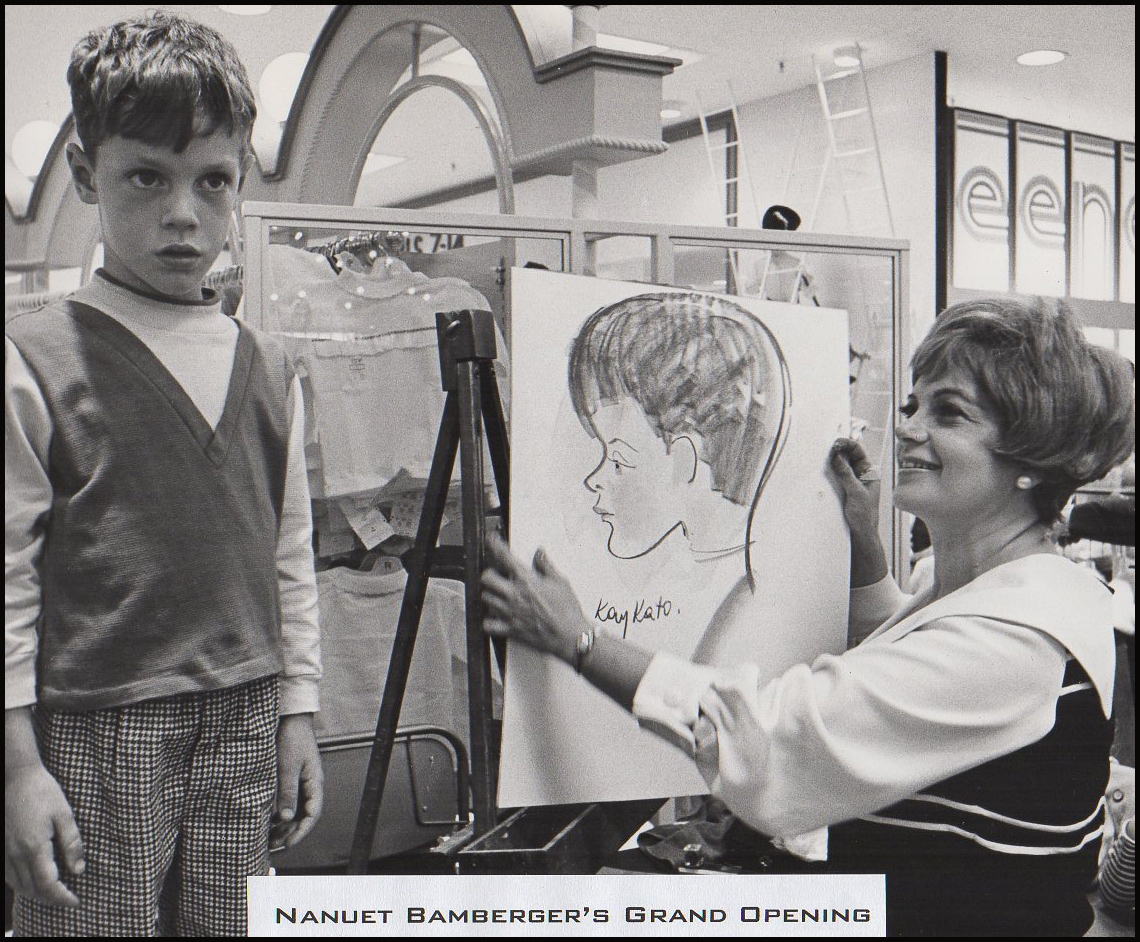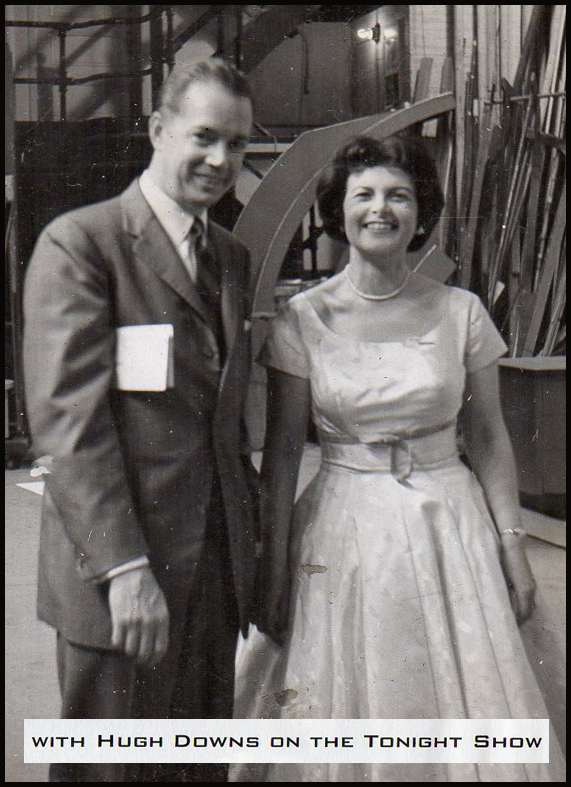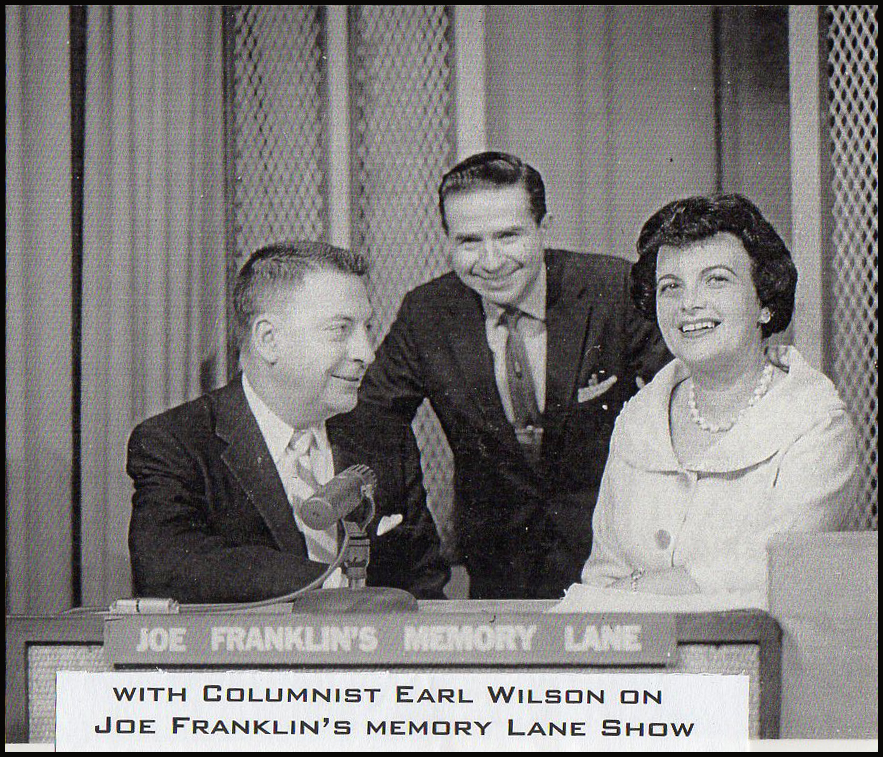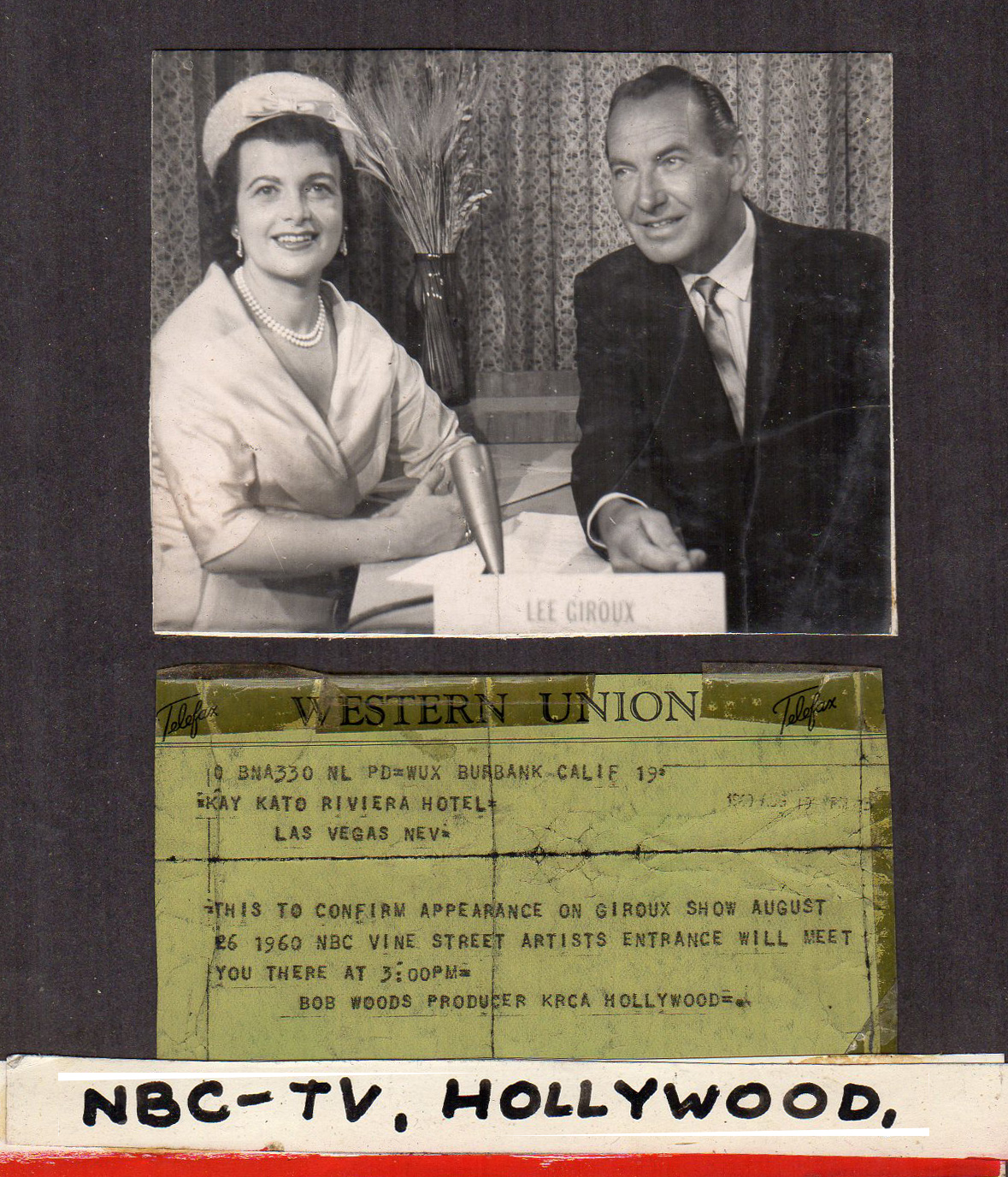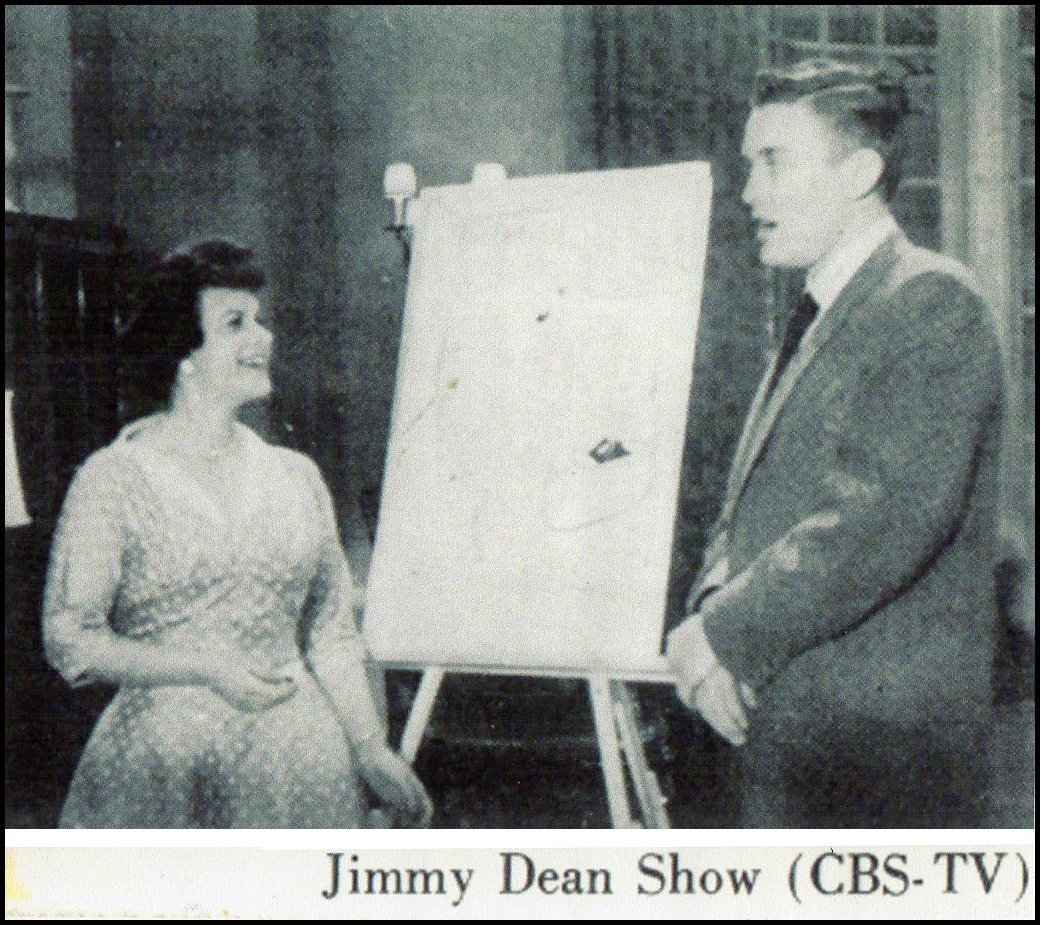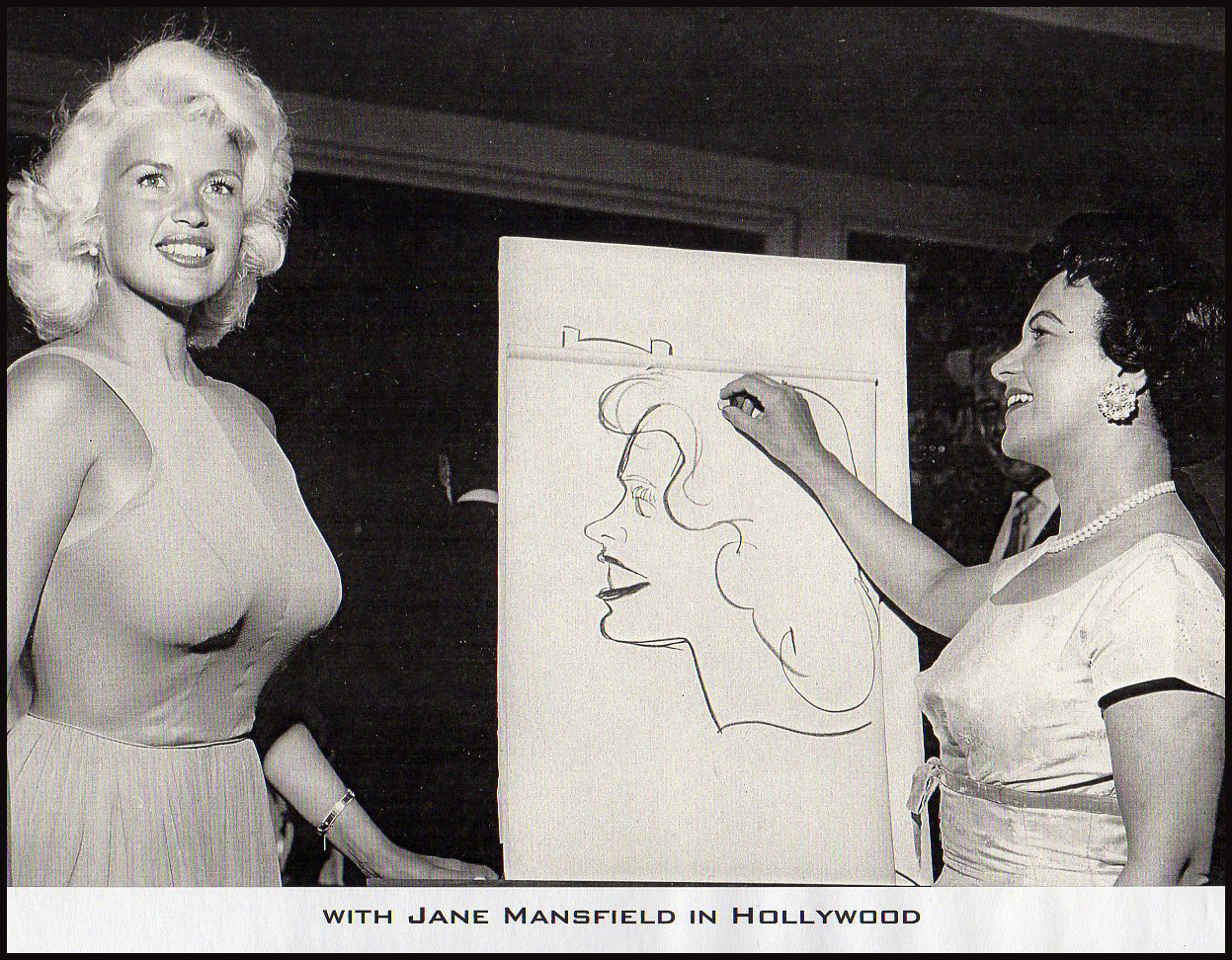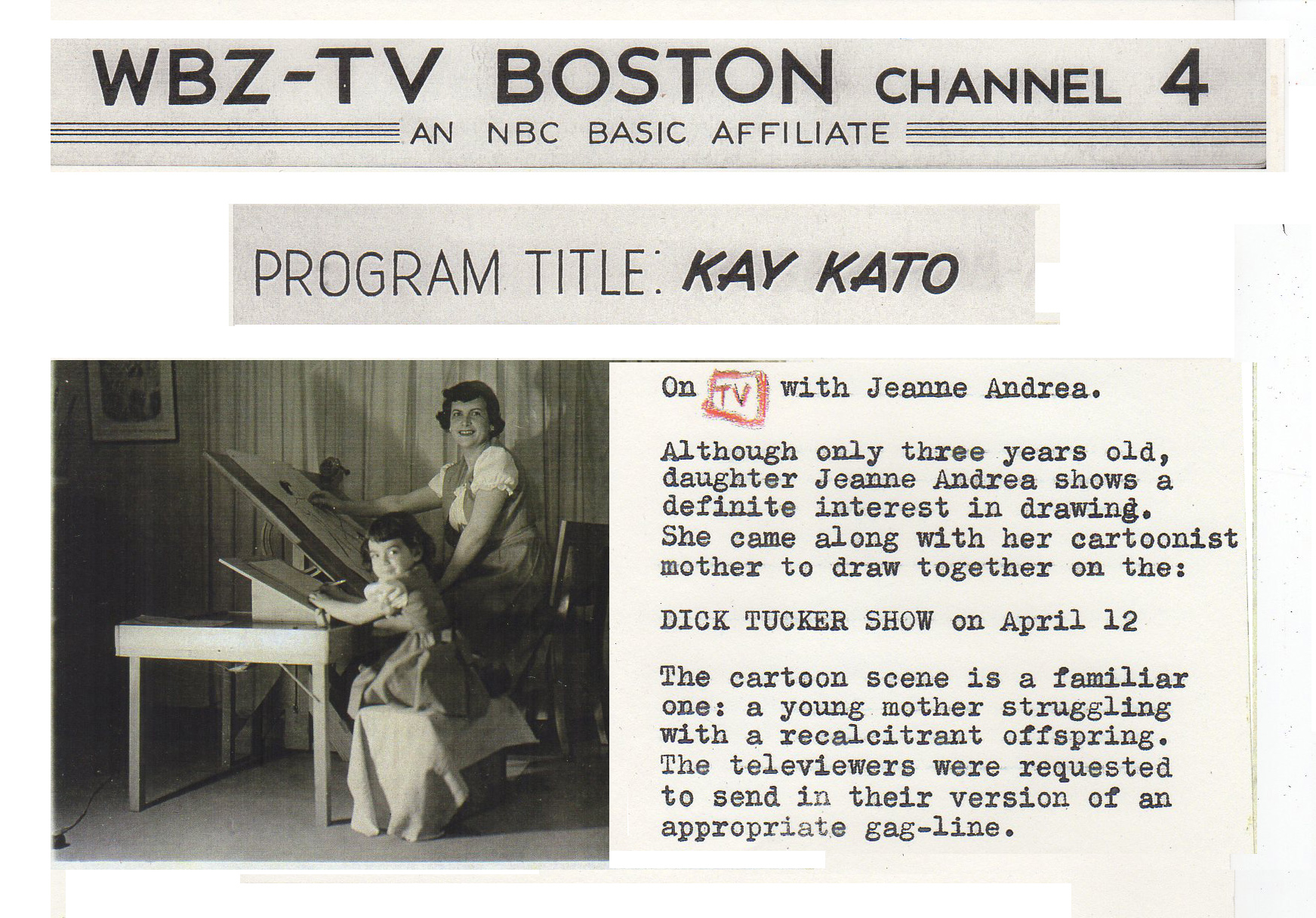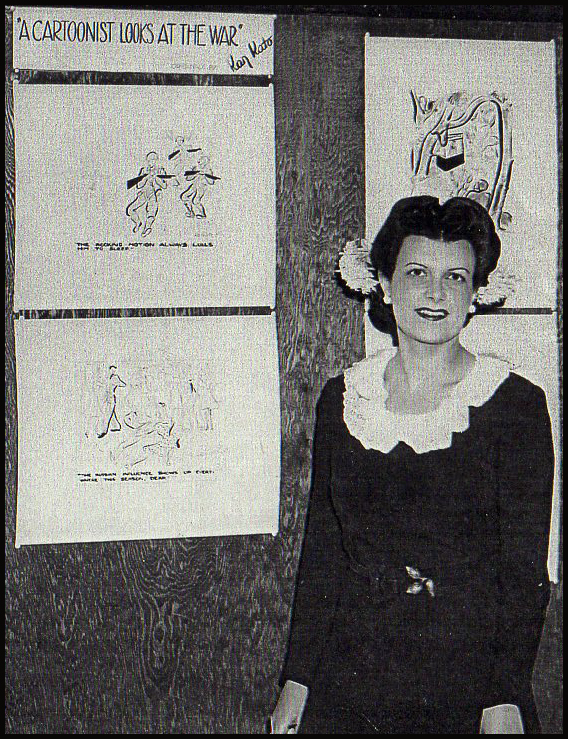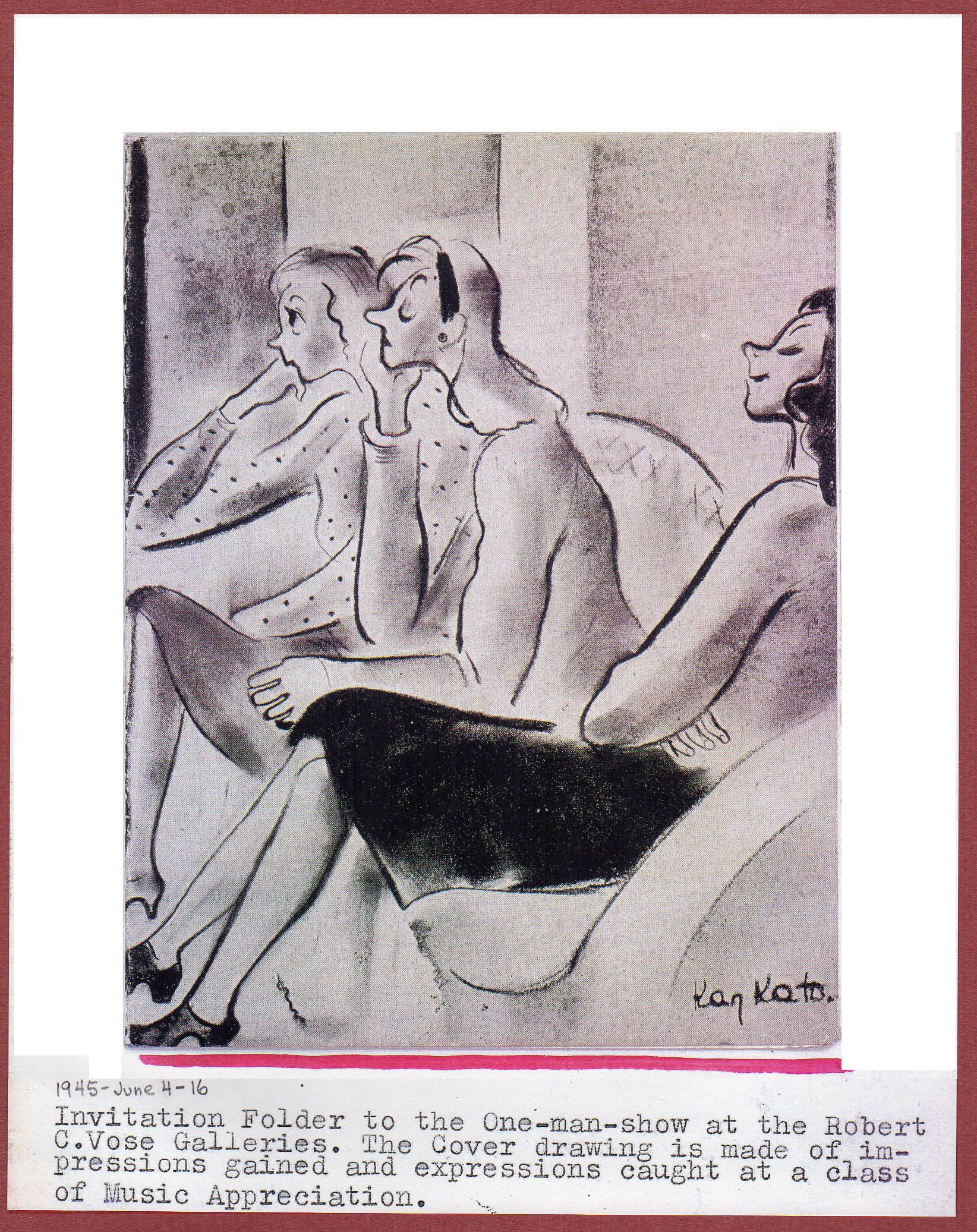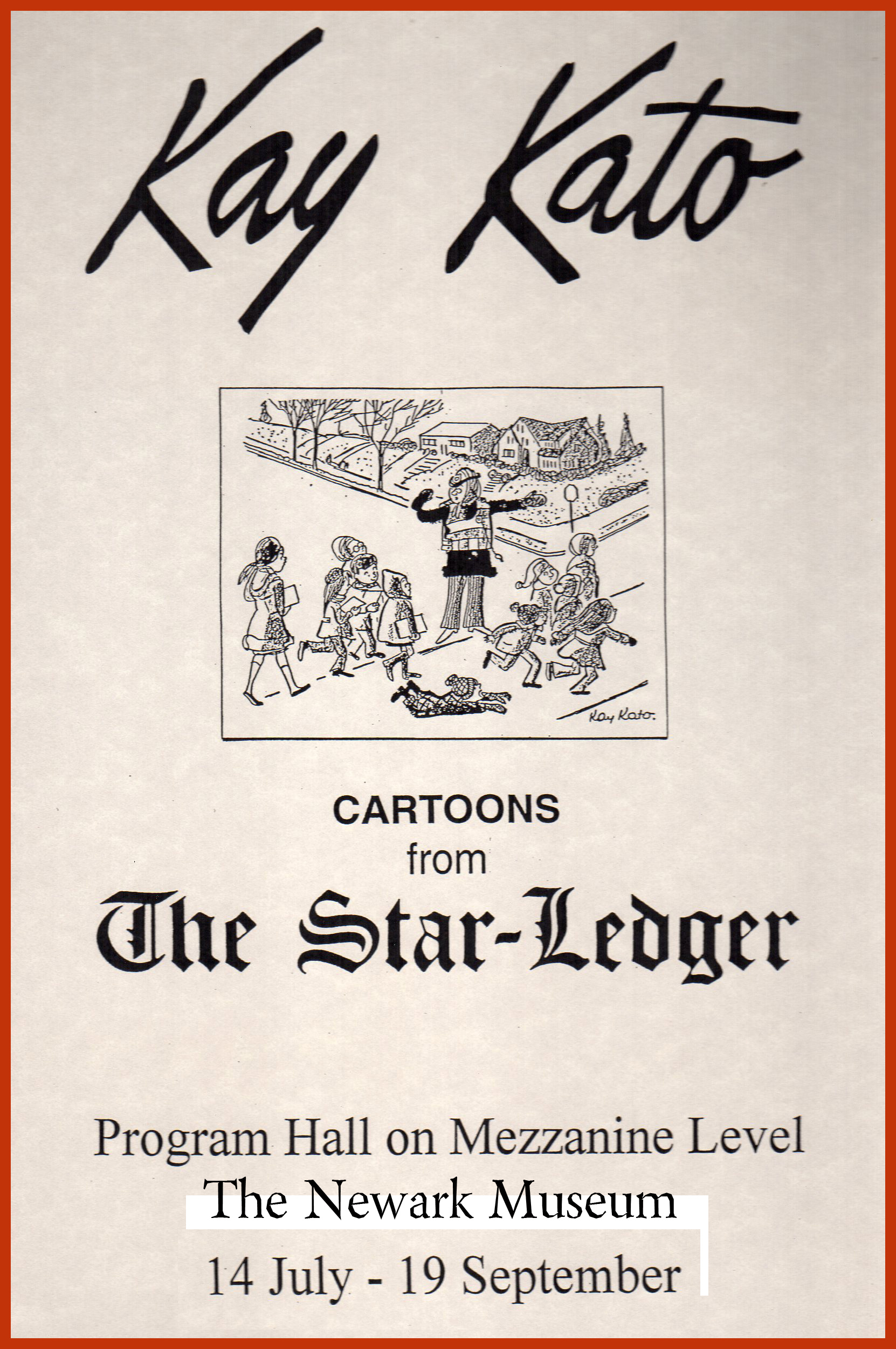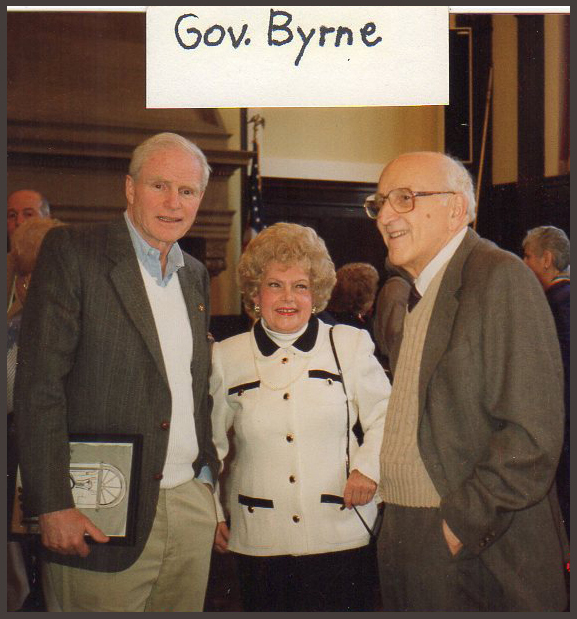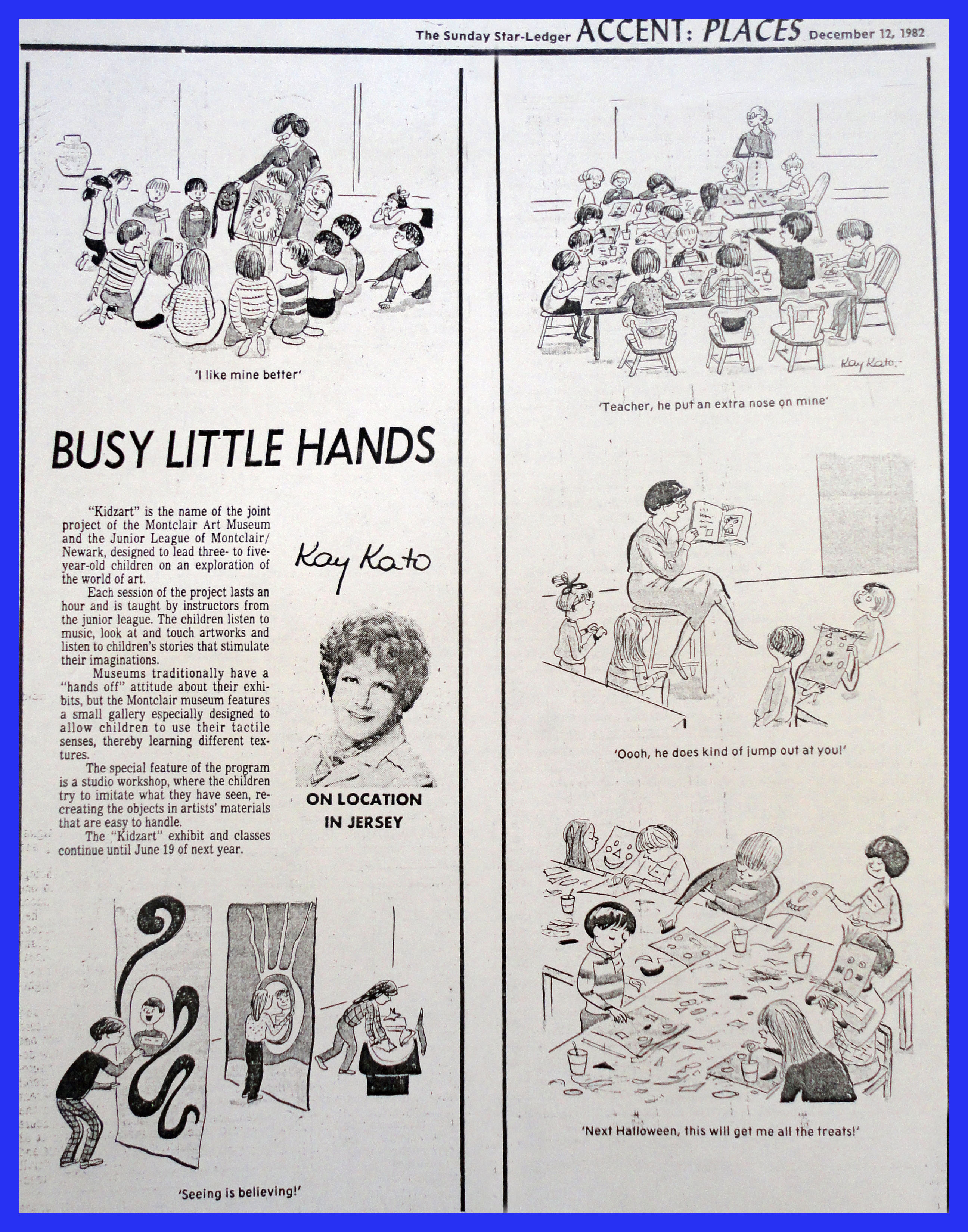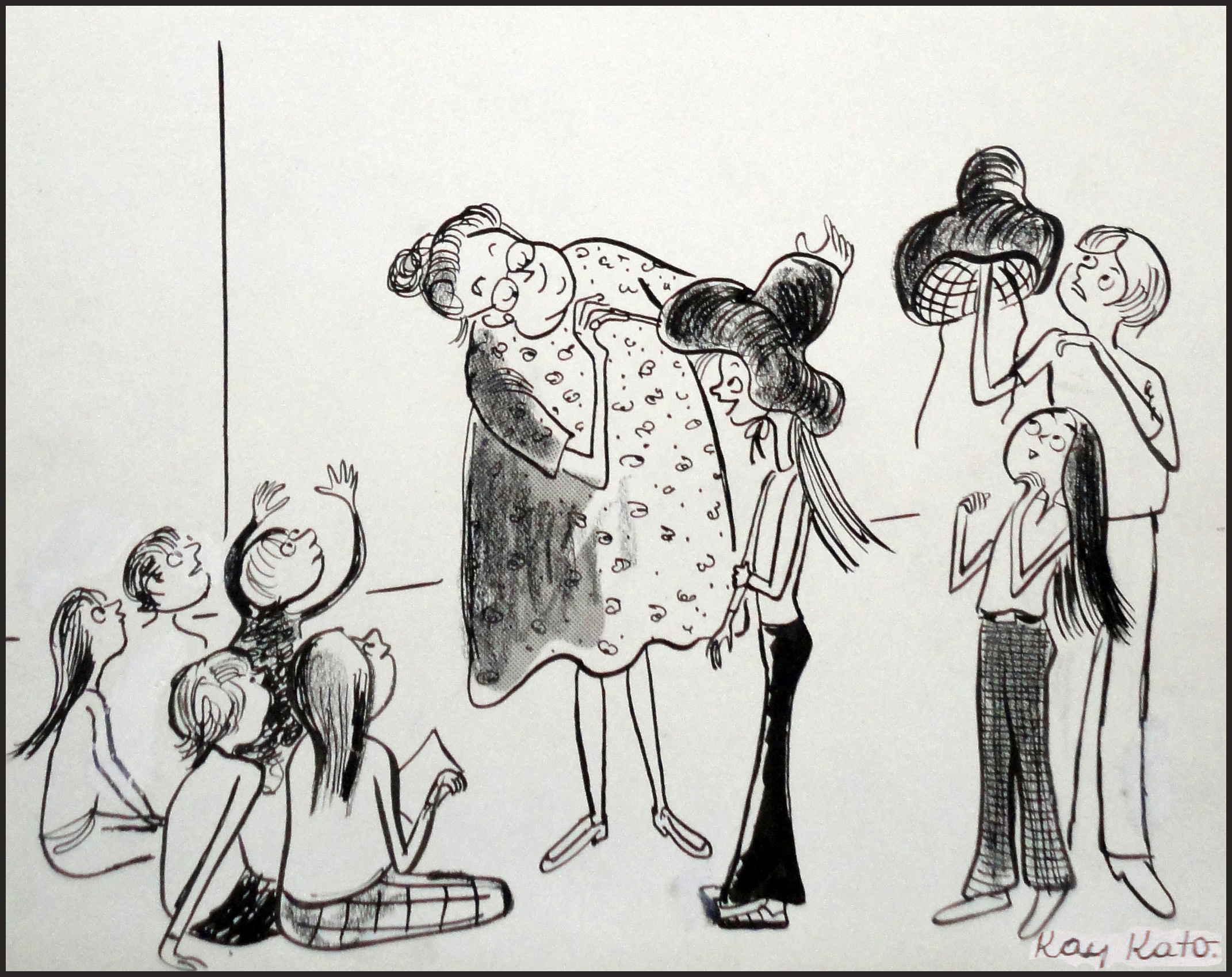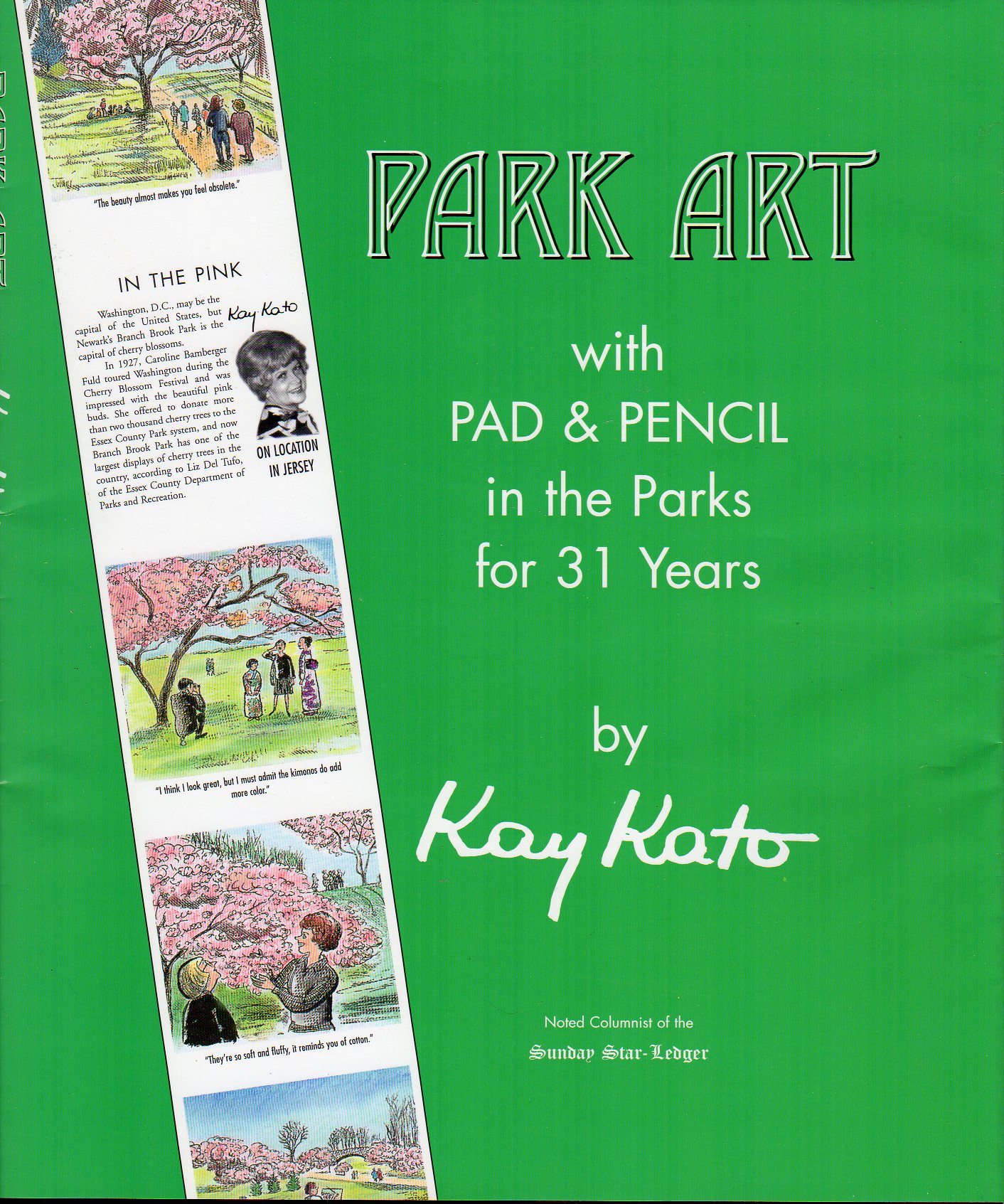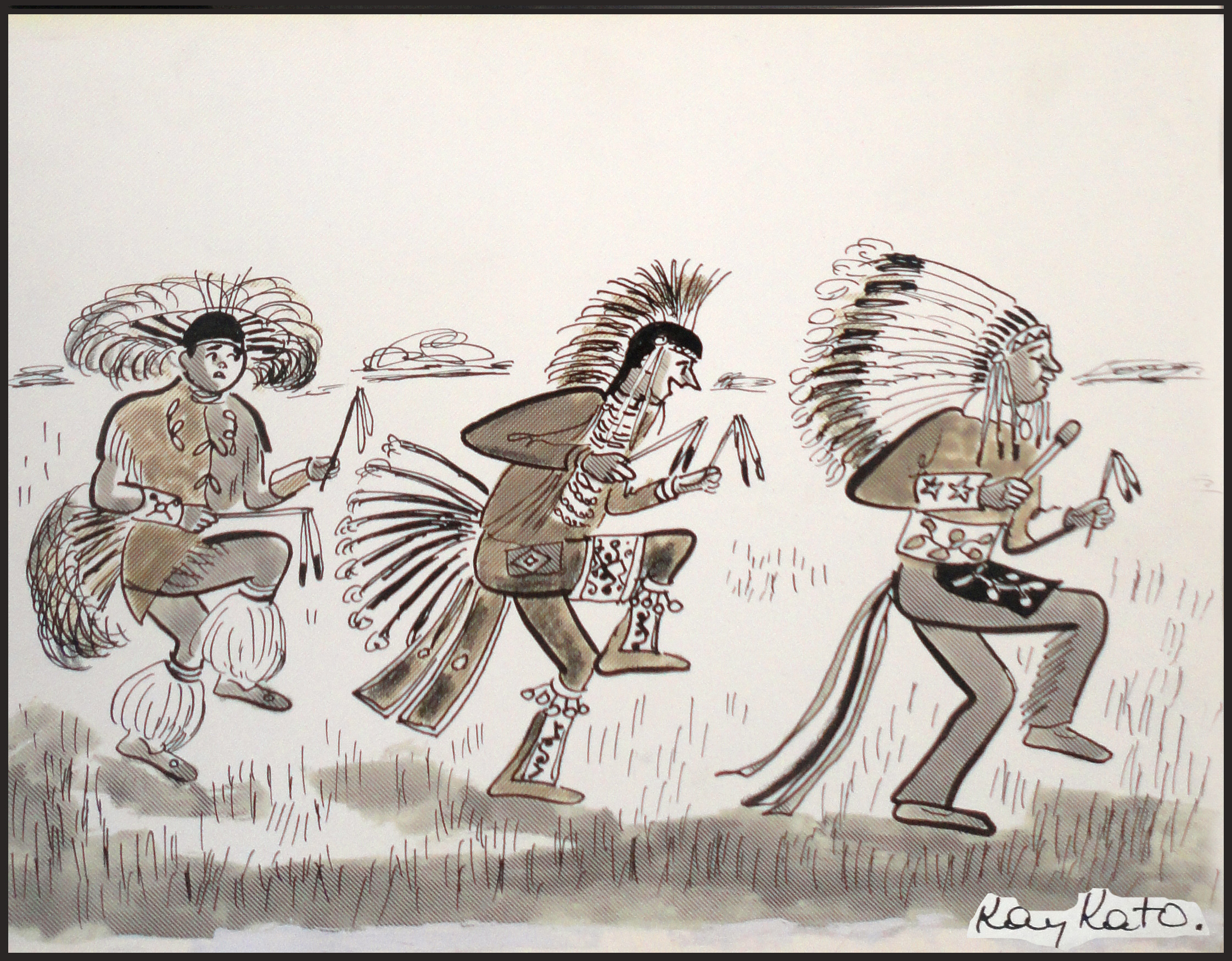BIOGRAPHY OF KAY KATO by Jeanne Benas
Background
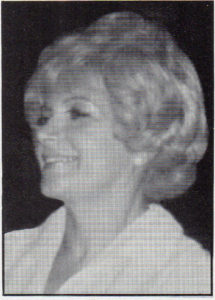 Kay Kato was born in Budapest Hungary, but she was always quite evasive about the exact year, and I never learned her age until I was an adult. She studied painting and music as a child while traveling all over Europe with her family. She played the piano so well as a child, she was considered by many to be a child prodigy, and she played all her life, joining chamber groups later in life. She would joke that she got all her funny ideas playing serious music on the piano. She loved playing Chopin, Beethoven and Mozart, and she played often.
Kay Kato was born in Budapest Hungary, but she was always quite evasive about the exact year, and I never learned her age until I was an adult. She studied painting and music as a child while traveling all over Europe with her family. She played the piano so well as a child, she was considered by many to be a child prodigy, and she played all her life, joining chamber groups later in life. She would joke that she got all her funny ideas playing serious music on the piano. She loved playing Chopin, Beethoven and Mozart, and she played often.
But her real love was drawing. She was always drawing, always carrying a pad and pencil with her everywhere from about the age of six. By ten, she was studying art with the best impressionists in Europe- painters Janos Vaszary, W. Aba-Novak, S. Szonyi. just to name a few.
She loved to draw in school, she told me, but when the class was drawing the model, she was drawing her classmates. Her ability to capture the moment was evident even as a child. She was a born sketching reporter. She finished her formal training at the Pennsylvania Academy of Fine Arts after coming to America.
At 17 she began her career by drawing a cartoon strip for a Hungarian newspaper. Her career came full circle, as she ended her career as a newspaper columnist for the Sunday Star-Ledger in 1995. Let me tell you a little about her life in between.
America & WWII
In America, her talent was recognized immediately and she began drawing for national magazines. During the war she joined the American Society of Magazine Cartoonists, and was the Boston representative for the Committee on War Cartoons. Her first American cartoon was published in 1941 in This Week Magazine, the largest circulated Sunday supplement in the country at the time. Then came Liberty Magazine, Saturday Evening Post, Parade Magazine, The New York Times and more.
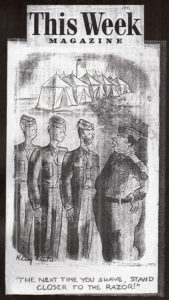
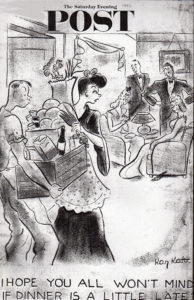
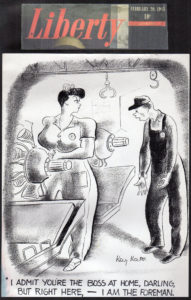
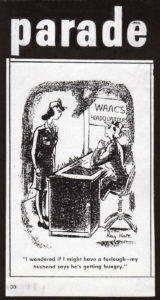
Along with artists like Peter Arno, Charles Adams, Ted Key, Lariar, Charles Saxon, Gregory D’Alessio, and Garret Price she did anti-Axis cartoons, and in 1942, two of hers were accepted in an Exhibition of War Cartoons in NYC. She was the only cartoonist of the group to be written up in the New York Times. Three of her cartoons were published in “The Best Cartoons of the Year” book in 1942, and again in 1943.
She was also commissioned to draw a 3-page spread for the WAACS, which was published in PM Magazine. “A girl artist takes you to NY’s Recruiting Center for the WAACS” declared the intro. She worked for the Office of War & Information, the Treasury Department, and the USO, where she drew caricatures of the troops with other cartoonists in Fort Dix, New York and Boston. Her cartoon about war bonds for the US Treasury was chosen by the The New York Times to be published in their magazine.
Many people ask how she got her name, Kay Kato. My recollection is that with the success she enjoyed after coming to America, a reporter was sent to interview “this foreign lady cartoonist who could draw with the best of the boys.” Her name “Kay” in Hungarian sounds like Kato, so the reporter combined the two, and she stuck with it ever since. I heard she was more partial to the name “Kitty Kelly” for her nom de plume, but that had already been taken by a shoe store!
Boston
After moving to Boston in the 1940’s, Kay Kato continued drawing cartoons for major publications- the Boston Globe, Boston Herald, Christian Science Monitor, the New England Telephone & Telegraph Company, as well as the national magazines. For one of these magazines, she was assigned to do a study on Displaced Persons after the war, catching the poses and expressions of the people as the ships unloaded. These were published in 1950. And from 1945 through 1947 she taught cartooning at the School of Art in Boston.
Lectures
From the ’50’s to the ’80’s, Kay traveled all over the country speaking at women’s clubs, literary societies and schools on the “Art of Cartooning” and “Laughing at Life”. Laughing at life was really her philosophy. With all the hardships of coming to a new country, learning a new language, being a career woman when it wasn’t in vogue, and then a single mom to a wild and crazy daughter, she could always find something funny and draw it. Even a 10-day stay in the hospital resulted in 40 new cartoons.
In her lectures, she’d mix her own brand of philosophy and humor: “Life is just a series of cartoons if you have the sense of humor to see it that way.” “Fine art and cartooning can be mixed, as long as laughter is part of the recipe.” “All it takes to be a cartoonist is a pad of paper, a sense of humor, and a pinch of courage.” “Courage is made up of many tiny fears that said their prayers”.
She filled scores of notebooks with these words of wisdom in addition to the thousands of quick sketches she drew everywhere she went- buses, trains, planes, doctor’s offices, the hair salon, grocery shopping, the beach, my school!
She was forever finessing the lectures. She even took acting lessons in 1960 at the American Academy of Dramatic Arts in NYC to polish her speaking skills. She was invited to lecture all over the country. And at the end of her lectures, she’d draw caricatures of the audience members in just a minute or two! A plea to leave out their double chin was the top request all over the country. “Don’t worry”, she’d tell them, “this is a quick sketch. I only have time for one”.
Television & Celebrities
In the late ’40s and early ’50’s, Kay Kato became a frequent guest on live TV shows, both local and national. Her ability to sketch quickly was perfect for it. And it didn’t hurt that she was an attractive lady, with an adorable daughter who at three years old, accompanied her on live TV in a matching outfit. But her most memorable appearance was on Jack Paar’s Tonight Show in 1958.She was also a frequent guest on the Jimmy Dean Show, Joe Franklin’s Memory Lane, and many others in Las Vegas and Hollywood, where she drew celebrities like Jane Mansfield, Mayor La Guardia, Buffalo Bob and Howdy Doody. Other celebrities she’s drawn from life include Bob Hope, Phyllis Diller, Count Basie, Loretta Switt, Yehudi Menuhin, Arlene Francis, Ozzie and Harriet Nelson, Bobby Riggs, among others. Some of the politicians include President Johnson, President Nixon, VP Hubert Humphrey, Margaret Truman, King Hussein, Shirley Temple Black, Van Cliburn, Victor Borge, Svetlana Stalin, Abba Eban, Mayor John Lindsay, Senator Barry Goldwater, and NJ & NY Governors etc. while making sure she got their autographs.
Art Shows
Kay Kato’s cartoons and paintings were shown around the country. Some included were one-woman shows at the Boston Public Library “Cartoonist Looks at the War” in 1945,
RC Vose Galleries- Boston in 1945, The Newark Museum in 1980, and another in 1993, both televised. The Newark Public Library show in 1992, attended by NJ Gov Byrne. Those originals are now in their Special Permanent Collection. Montclair State College show in 1987, later published the drawings in book form, and the Bellville Public Library in 1989 where 50 cartoons remain in their permanent collection. Other one-woman shows were held from 1956-1992, and many group shows from 1941-1988, including Pennsylvania Academy of Fine Arts in 1941, American Fine Art Society Galleries in NYC, in 1943, Montclair Art Museum in 1953, 1956, 1957, and International Salon of Cartoons in Montreal Canada from 1975-1988.
Awards
She was listed in “Who’s Who in American Art”, “Who’s Who in the East”, “Who’s Who of American Women” and in 1970 was selected as one of the “Foremost Women in Communication.” Some of her other awards include first prize for cartoons from the New Jersey State Federation of Women’s Clubs in 1977 and 1978, a plaque from The Newark Museum Paleontology Program in 1979, from the Livingston Historic Society in 1990, from the American Heart Association, and in 1989 she was honored by NJ Governor Kean at the State House for the 25th Anniversary of her column in the paper.
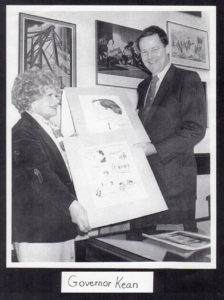
The Star-Ledger
In the fall of 1964, at the age of 50, she began her new career as the cartoon/columnist for the Newark Star-Ledger. And she continued this weekly Sunday column for thirty-one years without ever missing a week. Mort Pye, the Editor-in-Chief for most of that time, described meeting her this way:
“A gracious, unassuming woman carrying a portfolio of cartoons walked into the Star-Ledger office. As she started to open the portfolio, it seemed she would become the latest in a parade of would-be political cartoonists. But as she spread out examples of her work, it was clear politics had nothing to do with her visit. Her objective was to cover everyday activities of the people of New Jersey, and she was confident in her ability to provide a different and interesting feature.” Kay Kato on Location in Jersey was born and continued as a regular feature in the Sunday Star-Ledger for 31 years.
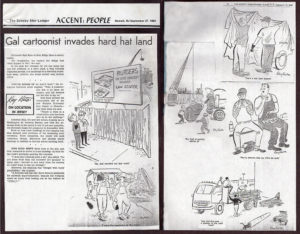
She loved covering the state of New Jersey as a sketching reporter. She traveled with pad and pencil in hand, just as she always wanted. Her first column in 1964 featured the construction site of the Rutgers Law School, and the next one was at an LBJ barbecue. She got fan mail right away, and requests from readers to sketch their events. She drew dog shows and theater shows, backstage and behind the scenes. She drew inside the workings of the Lincoln Tunnel, visited the IRS, toured a nuclear power plant and the inside of an incinerator. She drew livestock auctions, a sheep sheering contest, and a mushroom walk. She looked for dinosaur footprints and took a ride on a cherry picker. She visited Thomas Edison’s Lab and watched chickens being hypnotized. She flew to Puerto Rico for lunch, and came back home for dinner, with the sketches to prove it.
What really set the column apart was the fact that readers saw themselves in the cartoons she drew. Each column showed real people doing real events in New Jersey. By 1995 when she retired, she figured she had drawn 8500 individual cartoons for the column.
Book- Park Art
In 1999 when she heard that the Turtle Back Zoo might have to close, she offered her help. She compiled the drawings from the Sunday Star-Ledger which featured the Essex County Parks and created a book called Park Art, with all proceeds benefiting the Essex County Park System. Of the 1600 weekly columns, over 100 featured some part of the Essex County Park System. “Park Art, with Pad & Pencil in the Parks for 31 Years” by Kay Kato was the culmination, published by Dunning Co. Publishers of Virginia Beach. She promoted that book around the state with book signings, and donated all proceeds as well as the original drawings for County Park improvements.
***
Her numerous awards, exhibits, TV appearances, write-ups and publicity were a testament to a woman who persevered in a man’s world and rose to the top. She was one of the few women cartoonists during the war and in mid-century. But her skills were second to none.
She resided in her Glen Ridge New Jersey home for over 50 years, and was honored after her death in 2006 with a well-attended program about her life with a retrospective exhibition of her artwork at The Glen Ridge Women’s Club, where Glen Ridge Mayor Carl Bergansons declared October 3, 2006 to be Kay Kato Day.<
More info to come. In the meantime, contact Jeanne Benas at Jeanne@BenasArt.com and see her website at http://www.BenasArt.com
